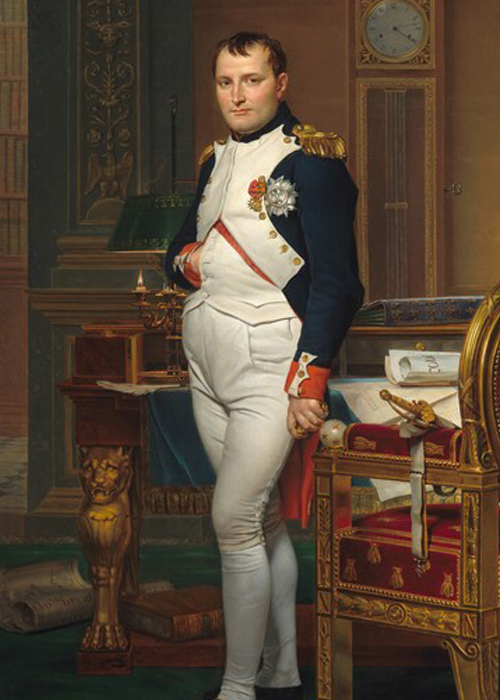As the elegant rosés from the French island of Corsica continue to favorably draw comparisons to those of its close neighbor on the Mediterranean mainland, Provence, they also resurrect consideration of the somewhat odd drinking habits of the island’s most famous native son, the Emperor Napoleon. It also raises our curiosity: What would France’s great conquering hero of over two centuries ago think of these pink wines — and how many stars might he award them?
If we make some educated guesses, based on Napoleon’s well-documented affinity for wine, the answer might be surprising.
To begin, even most wine aficionados may find it surprising that winegrowers on this mountainous island off the coasts of both Provence and Tuscany — Italians by heritage, but citizens of France — are old hands at making delicious pink wines and not just chasing a fad.
Don’t miss a drop!
Get the latest in beer, wine, and cocktail culture sent straight to your inbox.
“About 20 years ago, we were producing about 70 percent red wines, 20 percent rosé, and 10 percent white,” says vigneron Eric Poli of Domaine Poli, the president of Vins de Corse (Corsica). But that quickly changed. “Today, we are about 70 percent producers of rosé, 17 percent red, and 13 percent white.”
Why the flip? “Tourism,” Poli says. “Europeans love to take their vacations here, and they want to drink lighter, cooler wines. So rosés have been the most popular wines in Corsica for years.” Although some rosés are made from the international variety, Grenache, the majority come from two indigenous red grapes that are increasingly being grown organically: Niellucciu and Sciaccarellu.
“Niellucciu is mainly grown in the northern part of the island, and wine produced from it is more structured, more tannic, rounder, and a little heavier,” Poli says. “Sciaccarellu is mainly grown in the south, and it is more refined, paler — we call it ‘gray’ — lighter, and a touch more acidic.” exporter Vincent Cervoni adds, “Most rosés are made with red grapes, but when a white grape is used, it is usually Vermentinu,” or Vermentino, Corsica’s primary white grape.
Altogether, Corsica produces about 50 million bottles of wine annually — which translates to around 35 million bottles of rosé — from around 14,000 acres of vines, most located in the plains between the sea and the foot of the mountains. Its soils are mainly granite and slate, with some patches of limestone and clay. There are nine different Appellation d’Origine Contrôlées (AOCs) as well as one rosé-dominant Indication Géographique Protégée (IGP), “Île de Beauté,” which is also a nickname for Corsica. The region comprises about 135 single wineries and four cooperatives.

The history of winemaking in Corsica dates back thousands of years to the Greeks and Italians, and for much of its modern history, Corsica was ruled by the city-state of Genoa on Italy’s West Coast. In 1755, a revolt led by Pascal Paoli, a native Corsican statesman and military leader, gained the island independence for 13 years until 1768. That’s when Genoa relinquished to France its claims to Corsica in payment of its war debt. In 1769, France sent in 30,000 troops to put down the rebellion, the same year Napoleon Bonaparte was born in Ajaccio, today one of Corsica’s principal wine regions.
According to historian Alan Forrest, Napoleon’s father — at first part of the rebel faction — saw which way the wind was blowing and “committed himself politically to France, dropping the Italian ‘Carlo Buonaparte’ in favor of the aristocratic ‘Charles de Bonaparte.’” Young Napoleon was sent to France to be educated and to enter the military, but until the time he declared himself “Emperor of France” in 1804, he remained conflicted as to whether he was really French or Corsican. This did not keep him from falling in love with wines from the mainland.
Napoleon has been quoted as saying he drank Champagne both to celebrate victory and to eliminate the sting from defeat, yet his favorite wines were from Burgundy — particularly Chambertin — and he transported these bottles with him as he invaded one country after another. But Napoleon’s dirty little secret was that he added water to his wine, even ice water, to dilute it. Or, as his butler delicately put it, “The Emperor drank only Chambertin and rarely pure.”
So might Napoleon today, if he simply wanted a lighter, flavorful, chillable wine, simply pack up cases of Corsican rosé on his way to invade Russia? We’ll leave that to historians and sommeliers to debate.
When the English finally defeated Napoleon in 1815 and exiled him to the remote Atlantic isle of St. Helena, the ex-emperor was insulted when the Brits forced him and his sizable retinue to drink Bordeaux, which they owned at the time, instead of Burgundy. Not that his conquerors weren’t generous in the amounts.
“In the last three months of 1816 alone,” Forrest says, “over 3,700 bottles of wine were delivered to Longwood [Napoleon’s estate in exile], among them 830 bottles of Bordeaux.” Could a thirsty Napoleon, when he earlier and famously posed with his right hand tucked inside his vest, merely have been searching for a corkscrew?
One could also argue that, as Napoleon certainly earned his wine bona fides, he should be declared Corsica’s honorary wine ambassador to America, just as Brangelina is for Provencal rosés. But Poli has his doubts: “For some reason, I think Americans today might have more interest in Brad Pitt than in Napoleon.”